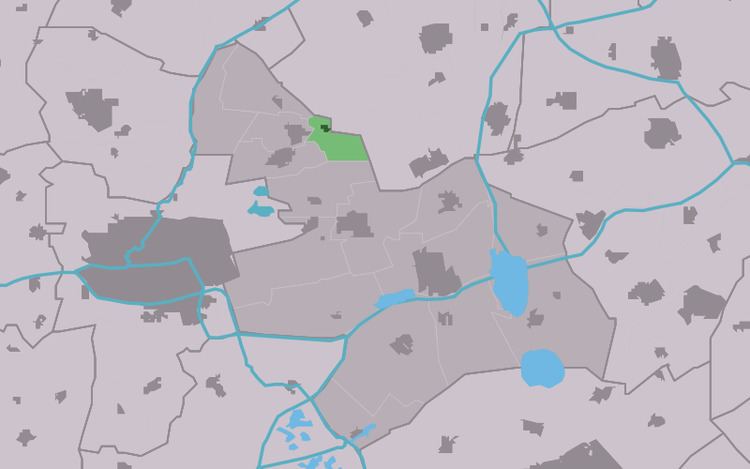Local time Thursday 6:48 PM | ||
 | ||
Weather 9°C, Wind NE at 23 km/h, 71% Humidity | ||
Mûnein (Dutch: Molenend) is a small village in Tytsjerksteradiel in the province Friesland of the Netherlands and has around the 700 citizens (2008).
Contents
- Map of MC3BBnein Netherlands
- History
- Flax factory
- Siamese twins
- Population
- Famous former residents of Mnein
- Streets
- References
Map of M%C3%BBnein, Netherlands
History
Until 1948 was Mûnein, a part of Oentsjerk. At the request of Village Interest in 1948 Mûnein received te village status in 1948 and came off Oentsjerk. the village status was given and Mûnein was independent of Oentsjerk. Until then, it was customary for the village status was given to areas with a church that did not Mûnein. Because there is a café, a primary school and associations, the state still provided by the municipality Tytsjerksteradiel on October 8, 1948.
Since 1953 Mûnein is officially part of the Trynwalden a region on a sand bar showing the villages of Oentsjerk. Gytsjerk, Aldtsjerk and Readtsjerk.
Flax factory
It was Theodore Baron Marius Theresius of Welderen Rengers by Heemstra State, which has stimulated the construction of the flax factory. He was a member of the commission Door Arbeid tot Verbetering, which was founded by his father, Julius Wilco. On May 6, 1898, upon the municipality Tytsjerksteradiel submitted an application to build a factory near the Swarte Broek, a lake near Mûnein. So wast the first factory built of the "N.V. Friesche Maatschappij van Vlasindustrie" in Mûnein, the name came in colorful tiles on the roof and stand on the front of the factory, where it still be read. The location of the Swarte Broek was chosen because the flax had first go through rotting process in the open waters. The opening of the factory on November 24, 1898 with JJ Westra as director. The plant is to 24 April 1967 served. The restored smokestack and a statue on the square in town still refer to the time of the flax processing. Today there is a small form of housing for the mentally handicapped in the old flax factory and by the tall smokestack still be seen from afar.
Siamese twins
Mûnein became national news in 1953 by the birth of a Siamese twins on November 8, 1953. Village Doctor Wijthoff Frisia Staete joined the new mother that her seventh child would receive after they gave birth to two babies joined at the stomach. They were rushed by taxi to the Diakonessenhuis a hospital in Leeuwarden charged. The babies grew well and after examination revealed they had their own hearts, lungs and other organs have Fitál. They were in the body independent of each other. it was discussed with an English physician who had experience with a separation of Siamese twins. Seven months after birth, in 1954 the twins underwent surgery to separate them. They were the first Siamese twins in the Netherlands to have a successful separation.
